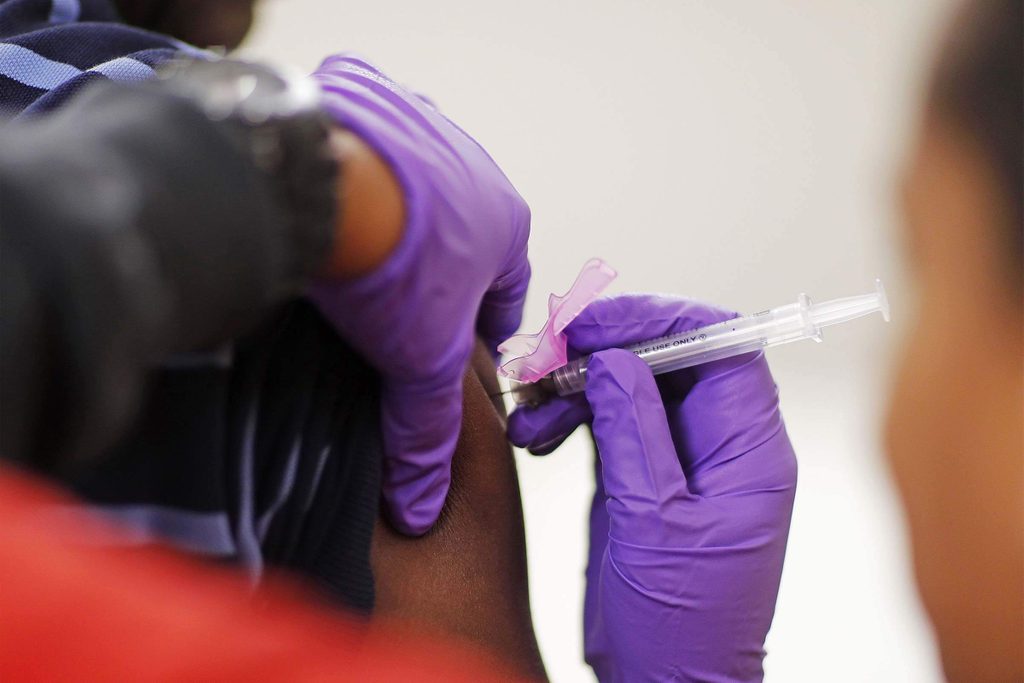The Truth Behind This Year’s Record-Breaking Flu Season
Updated: Mar. 12, 2018
This year's flu season is still hitting Americans hard—here's why.

As flu seasons go, this one has been a doozy. While it’s been nowhere near the devastation caused by the Spanish flu pandemic of 1918, which killed 675,000 Americans, it’s perhaps a close second.
As of February 2018, 23,324 people have been hospitalized with confirmed flu-related illnesses, and 114 children, including 45 under age 5, have died, according to data from the Centers for Disease Control (CDC). (Adult flu deaths will be tallied after the season ends.)
And it’s not over anytime soon. “We have six more weeks of flu season left before we get back to baseline,” says Kristen Nordlund, a CDC spokesperson.
Several factors have made this flu season one of the worst on record:
- A particularly nasty strain. The CDC tracks more than one strain of influenza, and this year’s dominant strain is the virulent H3N2 variety, which usually packs a greater punch than other virus types. “We know from previous years where H3N2 is dominant that it tends to be a more severe season, especially for the elderly and the very young,” says Nordlund. “We’ve been comparing this season to previous years when H3N2 was dominant. One of those seasons was the 2014–15 season.” The same strain dominated this year. But this time around, it’s worse.
- Unfortunate timing. “The cumulative hospitalization rate for this year has already surpassed the end-of-season hospitalization rate for that year,” Nordlund says. “We tend to see different parts of the country being hit by the flu at different times. What was different this season was that the flu was everywhere all at once, and it stayed that way for three consecutive weeks. That’s just something we have not seen before.” (Final numbers on flu activity, hospitalizations, and deaths won’t be available until after the epidemic ends.) A possible explanation is that the virus was picking up steam just as people were coming inside from the winter’s cold and congregating at end-of-year holiday functions.
- The limitations of the flu shot. In general, the influenza vaccine, which is engineered to protect against several flu strains, just isn’t that good at protecting against H3N2 strains. “When H3N2 is put into eggs (as part of the manufacturing process), for some reason, it ends up experiencing changes so it looks a little bit different from the virus that is actually circulating,” Nordlund says. As a result, there’s usually lower vaccine efficacy with H3N2 flu, even when the vaccine is well-matched to what’s circulating at first. The vaccine effectiveness is estimated to be around 25 percent against H3N2, far lower than what public health officials would like to see, which is closer to 60 percent and up.
If there’s any good news, it’s that H3N2 flu is finally starting to lose steam. And although other strains of the flu, including H1N1 and influenza B, are still surging, this year’s vaccine seems to be much more effective against them, says William Schaffner, MD, professor of preventive and infectious diseases at the Vanderbilt University School of Medicine in Nashville.
It’s not too late to get a flu shot, experts say. Even if you come down with the flu—and here are six flu symptoms you shouldn’t ignore, the illness will probably be less severe and you’re less likely to suffer life-threatening complications such as pneumonia.
“A major reason we give the vaccine is to prevent complications,” says Dr. Schaffner. “We often overlook this very positive influence of the vaccine when we talk about effectiveness.”
To keep illness at bay, wash your hands frequently (or using hand sanitizer if you can’t get to the sink). Avoid sick people—even those who say they’re not contagious. And load up on these foods that help prevent colds and flu.
Feel like you are coming down with the flu? Ask your doctor to prescribe an anti-viral medication like Tamiflu, particularly if you’re at a high risk of complications, and stay home until you feel better.